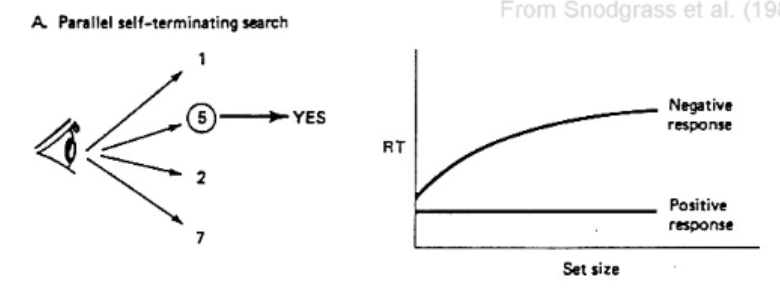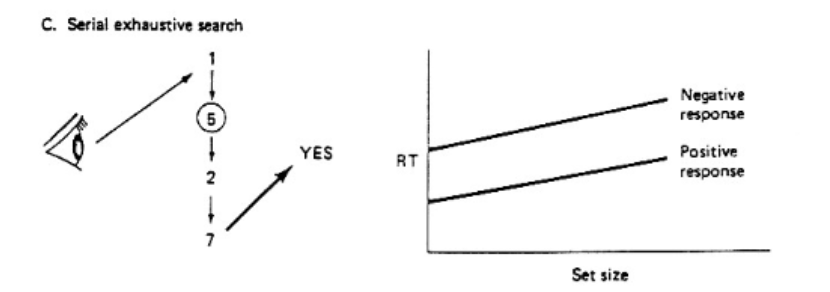CP Lecture 1 - History and Methods
1/16
There's no tags or description
Looks like no tags are added yet.
Name | Mastery | Learn | Test | Matching | Spaced |
|---|
No study sessions yet.
17 Terms
Core Principle of Behaviourism
Behaviourism viewed psychology as a "purely objective, experimental branch of natural science".
Its goal was to study only observable behaviour (Stimulus-Response).
It explicitly rejected the study of internal mental processes ("consciousness") and the use of introspection (looking inward), seeing them as unscientific.
Major Limitation of Behaviourism that Led to Cog Rev — Goal Directed Behaviour
Behaviourism could not explain complex, goal-directed behaviour that occurred without a stimulus or reinforcement.
It failed to account for internal mental representations.
The primary evidence for this failure came from Tolman's rat maze experiments , which showed that rats built "cognitive maps" of their environment even without a reward
Major Limitation of Behaviourism that Led to Cog Rev — Generativity of Language
B.F. Skinner tried to explain language as a learned chain of stimulus-response associations.
Noam Chomsky (1967) argued this was impossible. We can create and understand entirely new sentences we've never heard (e.g., saying "Clashes with the wallpaper" instead of just "Dutch" when seeing a painting).
This suggests we have internal, abstract mental rules (grammar), not just reinforced responses.
Major Limitation of Behaviourism that Led to Cog Rev — Attentional Overload
Behaviourism's simple S-R model could not explain attentional overload.
Humans cannot process all incoming stimuli at once (e.g., an air traffic controller). We have limited capacity.
This implies the existence of an internal "filter" or "bottleneck" where the mind actively selects information for processing.
This selection is an internal cognitive process, which Behaviourism ignored.
Tolman’s Perspective on Internal Mental Respresentations
Tolman argued that the mind is not a simple "telephone exchange" (S-R switches).
He proposed it is a "map control room".
He believed incoming stimuli are "worked over and elaborated" into a "cognitive-like map of the environment".
This internal map, not just a stimulus, is what determines the final response.
Tolman Rat Maze Design
He used three groups of rats in a 6-Unit Alley T-Maze.
Group I (Control): Rewarded with food every day.
Group II (Experimental): Received no reward for 7 days, then were rewarded starting on Day 8.
Group III (Experimental): Received no reward for 3 days, then were rewarded starting on Day 4.
Results of Tolman Rate Maze
Results: The rewarded group (Group I) showed a steady decrease in errors. The experimental groups (II and III) showed a dramatic and immediate drop in errors as soon as the reward was introduced.
Proof: This demonstrated Latent Learning. The rats had been learning the maze (building the "cognitive map") all along, but their learning was "hidden" (latent) until they had a motivation (the reward) to use it.
This proved that learning (an internal cognitive change) can occur without reinforcement (an observable S-R link).
Mental Chronometry and Donder’s Subtraction Method
Mental Chronometry is the use of reaction time (RT) to measure the speed and organization of internal mental processes.
Donders' Subtraction Method was an early example:
Measure Simple RT (e.g., press a button to any light).
Measure Choice RT (e.g., press left for red, right for green).
Logic: Choice RT – Simple RT = An estimate of the time taken for the "stimulus evaluation" or "decision" stage.
Additive Factors Method (Sternberg/Snodgrass)
It is a method for identifying the separate stages of processing in a task.
The Logic:
You manipulate two different variables (factors).
If the two factors' effects on RT are ADDITIVE (they add together independently), they are assumed to affect SEPARATE stages of processing.
If the factors INTERACT (the effect of one factor depends on the level of the other), they are assumed to affect the SAME stage of processing.
Additive Factors Method Applied to Memory Scanning Task
By mapping specific factors to the proposed stages.
Factor: Stimulus Quality (e.g., a clear vs. blurry number).
Stage Affected: Stimulus Encoding.
Factor: Size of Positive Set (e.g., 2 items vs. 6 items in memory).
Stage Affected: Serial Comparison.
Factor: Response Type (Positive/Negative).
Stage Affected: Binary Decision.
By testing these factors, we can confirm these stages are independent.
Memory Scanning — Parallel Search
Process: You check all items in the memory set at the same time (in parallel).
Predicted Graph: A flat line. Reaction Time (RT) would be the same regardless of the set size (1 item or 6 items), because the search happens all at once. "Positive" (yes) responses would be faster than "Negative" (no) responses.

Memory Scanning — Serial Self Terminating Search
Process: You check items in the memory set one by one (serially) and STOP as soon as you find a match.
Predicted Graph: RT increases linearly with set size. The "Negative" (no) slope would be twice as steep as the "Positive" (yes) slope, because "no" responses always require scanning the full list, while "yes" responses (on average) only scan half.

Memory Scanning — Serial Exhaustive Search
Process: You check items in the memory set one by one (serially) and scan the ENTIRE list every time, even if you find a match early on.
Actual Outcome: This is what the data showed.
Graph: RT increases linearly with set size. The "Positive" and "Negative" response lines have the same slope (they are parallel), because both response types require a full scan of the memory set.

Using the memory scanning outcome, what is the difference in aims between AI and Cognitive Psychology?
Artificial Intelligence (AI): The goal is OPTIMIZATION. An AI engineer would build the most efficient model, which is the Serial Self-Terminating Search (it's logically faster to stop once you find a match).
Cognitive Psychology: The goal is DESCRIPTION. Our aim is to find out how the human mind actually works, even if it's not the most efficient. The data showed humans use a Serial Exhaustive Search. We want to model reality, not optimize it
Why do Cognitive Psychologists reject introspection as a methodology?
Introspection (looking inward at your own thoughts) is rejected because:
It is not objective: You cannot independently verify another person's internal report.
It is not reliable: The same person may report different thoughts about the same process at different times.
It is not complete: We have no conscious access to most underlying mental processes (like how you perform a memory scan or retrieve a word).
It is often wrong: We are subject to cognitive biases that distort our self-perception.
Instead, we use objective measures like Reaction Time (RT) and Accuracy to infer these hidden mental processes.
Certainty Effect
The Certainty Effect is a cognitive bias where we irrationally overvalue outcomes that are 100% certain.
Example:
Choice A: 100% chance to win $30.
Choice B: 80% chance to win $45.
Introspection: "I am rational, I'll take the best deal."
Actual Behaviour: Most people irrationally choose A, even though Choice B has a higher expected value. This shows our "rational" self-concept is often wrong.
Pseudo-Certainty Effect
let's look at the 2-stage game. The probabilities are different, but it's designed to trick our brain into thinking it's the same.
Problem 2 (The 2-Stage Game):
Stage 1: You have a 25% chance to move on and a 75% chance to win nothing.
Stage 2 (IF you move on): Which do you choose?
Choice C: A "sure" win of $30.
Choice D: An 80% chance to win $45.
When you get to Stage 2, your brain makes a critical error. It forgets about Stage 1. This is a mental shortcut called "cancellation".
You feel like you're just choosing between a "sure" $30 (Choice C) and a "risky" $45 (Choice D). This feels identical to Problem 1.
Because it feels the same, most people make the same choice: they pick Choice C (the "sure" $30).